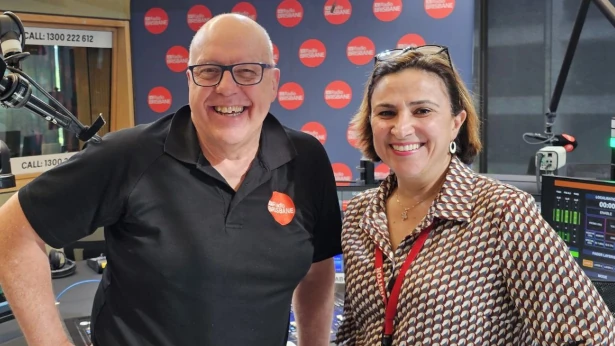Natgen exists to provide our clients with well-considered, risk-managed investment opportunities and quality strategic advice. We base our decision-making, advice and investment offers on careful measurement and analysis, and combine this with our management experience to arrive at quality solutions.
1,400+ followers
Peta brings over 25 years’ financial service experience gained in funds management, and wealth management. As a top performing fund manager, Peta managed institutional cash and fixed income portfolios (in excess of $5b) for Suncorp Investments, and as an Executive Leader, led ASX listed Cromwell Property Group’s Retail Funds Management business. At Natgen, Peta provides our funds management business with further depth and leads the development of new Natgen investments for the
benefit of our Unitholders.
Steve has had a varied career at the ABC from researcher for 7.30 Report to producing Stateline, as well as ABC Radio news and presenting the Queensland Statewide Evenings radio program.
Steve’s love of Brisbane and passion for fighting the good fight ensures lively and informative conversation every morning on ABC Brisbane.
612 ABC Radio Brisbane, the combination of fading globalisation, aging populations,
populist politics and huge budget deficits and surging energy demand means inflationary
pressures will remain higher for longer, according to many commentators. Are the markets ready
for this? What about you and me? In Australia, the Reserve Bank is saying no downward movement
on the cash rate this year. So let’s look at where we are at the moment with Peta Tils.
Peta Tils is head of funds management at NatGen. Good to see you again, Peta.
Hey, Steve.
Who is NatGen? You want to tell me? I’d like to give my guests an explanation in their own words.
Sure.
Who they are, who they represent.
We literally help people invest in commercial property. So people get really good investment
returns, owning shopping centres, warehouses, buildings.
Productive property.
Yeah, productive property. We handle all the work and give them income.
All right. Well, thanks for coming. Let’s look at the finance. So what does the US Federal
Reserve cut of, what, 50 basis points double what most of the markets are expecting? What does
that mean, Peta Tils?
So Steve, yeah, well, for us, okay, so just remember both economies are different,
structurally different. We’ve got in Australia with our homelines and things like that,
around about 75% of our homelines are on a variable rate. Over in the states, they borrow
for 30 years and fixed rates. So when they raise interest rates over there, it doesn’t
have the same effect. It’s more on the short term side of things like car loans and things like that.
Whereas here, if they hike rates here, we all feel it because we’re all on variable rates,
well, mostly. Mostly, yeah.
So yeah, so over there, economies kind of beavering along. They’ve got about a 2% growth rate over
here. We’re on about 1%, so we’re a bit more anemic and that’s because of that factor. And
plus we’ve got, everyone’s got high costs because of inflation, but they seem to have their inflation
a bit better tamed than we do. So…
Yeah, Jay Powell said things aren’t going to sort of have a downturn. So why the emergency,
what looks like an emergency rate cut of 50 basis points instead of the normal point in time?
I wouldn’t characterize it as emergency. It is actually priced in that they were going to do
1% by year end. So that was kind of factored in. So whether it was just a series of 25s or
it was a 25 or a 50, well, he did a 50. So he did it.
He can. Okay.
There’s probably another 50 coming by end of year, which is what’s factored in there.
So yeah, it’s not too bad, but it will depend too on who wins this election for them because if
Trump wins, he’s talking about cutting all the taxes and doing all that sort of stuff. So remember,
when we talk about an economy, there’s monetary policy, which is all this interest rate stuff.
And on the other side of the coin, there’s what government does.
Fiscal policy.
Fiscal policy, correct. So if they’re cutting in, sorry, cutting tax rates, that is super
stimulatory and that’s injecting sort of money back into the economy.
How will they pay down their debt? They’re a trillion dollars on debt interest payments already.
Never will.
Frikey.
So yeah, it’s look, everyone’s living for the minute, I guess.
Which is not terribly prudent.
No.
So our reserve bank says no movement in our cash rate till next year. Do you believe them?
I do. I think that’s kind of a fair assessment.
Something that was, yeah, so I’ve sort of spoken about that 1% growth rate in Australia.
We still don’t have our inflation tamed. Like in the States, they’re under 3%.
They’re about 2.5%, 2.7%, I think is their rate. Whereas we’re about a percent higher with inflation.
So we’re still not in our 2% to 3% band.
Anyway, so I, she’s focused on that. That’s fair enough because, you know, if, if inflation keeps
spiraling, it just makes everything more expensive continuously and then people need more wage rise.
And inflation is still very sticky here, isn’t it?
Correct. Because it’s embedded in things like wages and which,
which don’t move. You know, you can’t just adjust that unless you lose your job.
Yes.
But interestingly, Deutsche Bank pulled out a report this week and they called it labor hoarding.
So that’s a new term I hadn’t heard of that one.
I’ve not heard that one, no.
So essentially what it is, so instead of sacking people because you don’t need them,
it’s literally less hours worked. So instead of working a full week, maybe they’ve got you working
one or two days a week or something like that. So that’s labor hoarding.
So people are still employed, but just on less hours.
On less hours.
And it means you’ve still got access to the skill set if needed when business, when the upturn comes.
If you need to ramp it up.
And it means you’re competitive and get them.
Correct. And we, we had inflate, sorry, we had unemployment,
I’m sorry, employment data out yesterday. It still stayed the same, right?
So we didn’t get a bump higher or anything like that. So,
you know, 4.2% unemployment rate. Remember, we got as low as three and a half.
Yes.
Last year. So 4.2 is still pretty much considered full employment, which is a good thing.
What was interesting is under employment rates. So from 6.3% to 6.5%.
So people are getting more hours.
Less hours.
Sorry, less hours.
Less hours. They want to work more.
Yes.
So this kind of feeds into this labor hoarding theory.
And then the other thing to have a look at is some of the forward-looking indicators that
weren’t necessarily in those numbers, but like job ads that they look at, employment intentions,
there’s different surveys that come out. They’re all forward-looking things
and they’re weakening. So the labor market is cooling in Australia, but not quite yet.
And then conversely for us, we’ve got, I think there’s over half a million
net new migrants coming into Australia. So that’s coming in every year.
Yes.
That’s a lot of people. So for us to maintain this unemployment rate,
we need to be creating about 40,000 new jobs each month, which is kind of happening.
But this last, what was provided yesterday in the numbers,
it was actually part-time employment that was the bulk of the numbers.
Okay. My guess is Peta Tilse. Peta Tilse is Head of Funds Management at NatGen.
It’s five to 10 news in five minutes time. This is 612 ABC Brisbane.
So businesses are hedging or looking at hedging. How are they doing it?
So even though our cash rate is 4.35%, like that’s the official cash rate,
when you look at the term rates, so if you want to lock in a rate for three years,
the interbank rate is around about 3.5%. So what that’s saying is the markets are
expecting interest rates to come down. So it is coming, but just not right now.
So but having said that, does it get any better than that? Well,
because businesses are looking at these things over the next three years, possibly not. So
I mean, I know for us, like we look at what we call the capital stacks. So we have investors
investing in these properties, but we also borrow money and we look at that kind of combination
together to then buy the property, for instance. But we are looking at hedging certain things
hedging certain things because it is attractive at the moment. Now for mum and dads out there
with their home lines, it’s not dissimilar. So if you actually have a look at some of those
variable rates at the moment, I don’t know, there is sort of like the mid sixes still,
or maybe even higher. Have a look at like your two or three year or four year rates,
they’re there in the fives. And it’s possible that could come lower. It just depends on what
margin your respective bank or financier wax on top, so to speak. So you think people should
be looking at two to three year fixed mortgages? If it suits their situation, have a look. Yeah.
One of my listeners, Brian asked, why can’t Australia be like the United States and have
fixed mortgage rates, interest rates for 30 years? What changed and why us, Brian? Any ideas?
I would love that because I literally went when those those rates were at 2%. I begged my bank,
can I lock it in any longer than five years? So technically, I’m still on a 2% rate, which is
great. But you know, I would have lapped that up like no tomorrow. That sort of market in Australia,
unfortunately, isn’t as deep. We talk more about the 10 year Gavi bonds in our market. And really,
it’s up to the banks. No one really wants to hedge for 30 years. And it’s too complicated for them,
I think. Too far out for them. I think so. I spoke with Lee Fanonsen earlier this morning
from macrobusiness.com, he’s a former Commonwealth Treasury official. He said despite immigration,
the high levels of immigration, Australia’s economy isn’t going that well. I just want to
play you briefly what he said just to get a gut reaction. And the fact of the matter is,
Australia has been going backwards for six consecutive quarters in per capita terms,
which is the longest continuous decline in per capita GDP in the nation’s modern history.
Any thoughts? Yeah, I mean, they call it the capita recession. So a recession is defined
by two negative quarters of growth. And as I said just before, we’ve got GDP running at 1%.
It’s not a lot. It’s pretty anemic. It’s nothing. But you also consider those 500,000 people coming
into the country every year at the moment. And you look at that as a growth rate, that’s, I think
2% to 3% somewhere there. So per capita, we’re actually going backwards. So that is correct.
Peta, thanks for coming in once again. Pleasure, Steve.
Peta Tilse, is head of funds management at NatGen.

















Latest Interest Rates and Mortgage Impact A helping hand in commercial and property investment and...
Natgen stores up its next win Fund manager Natgen has closed its third capital placement...
Rates on Hold and Watching Inflation A helping hand in commercial and property investment and...






1,600+ followers